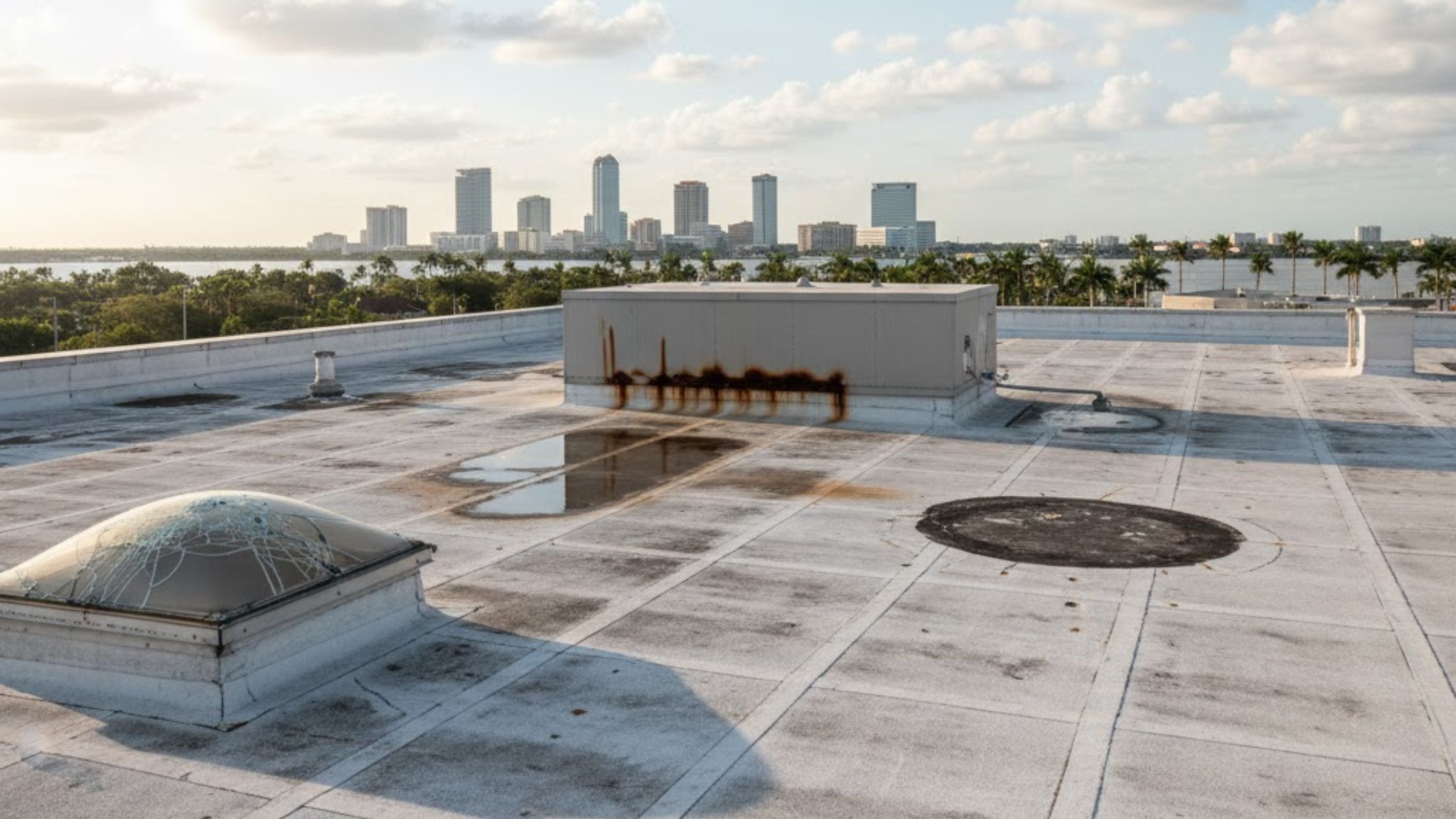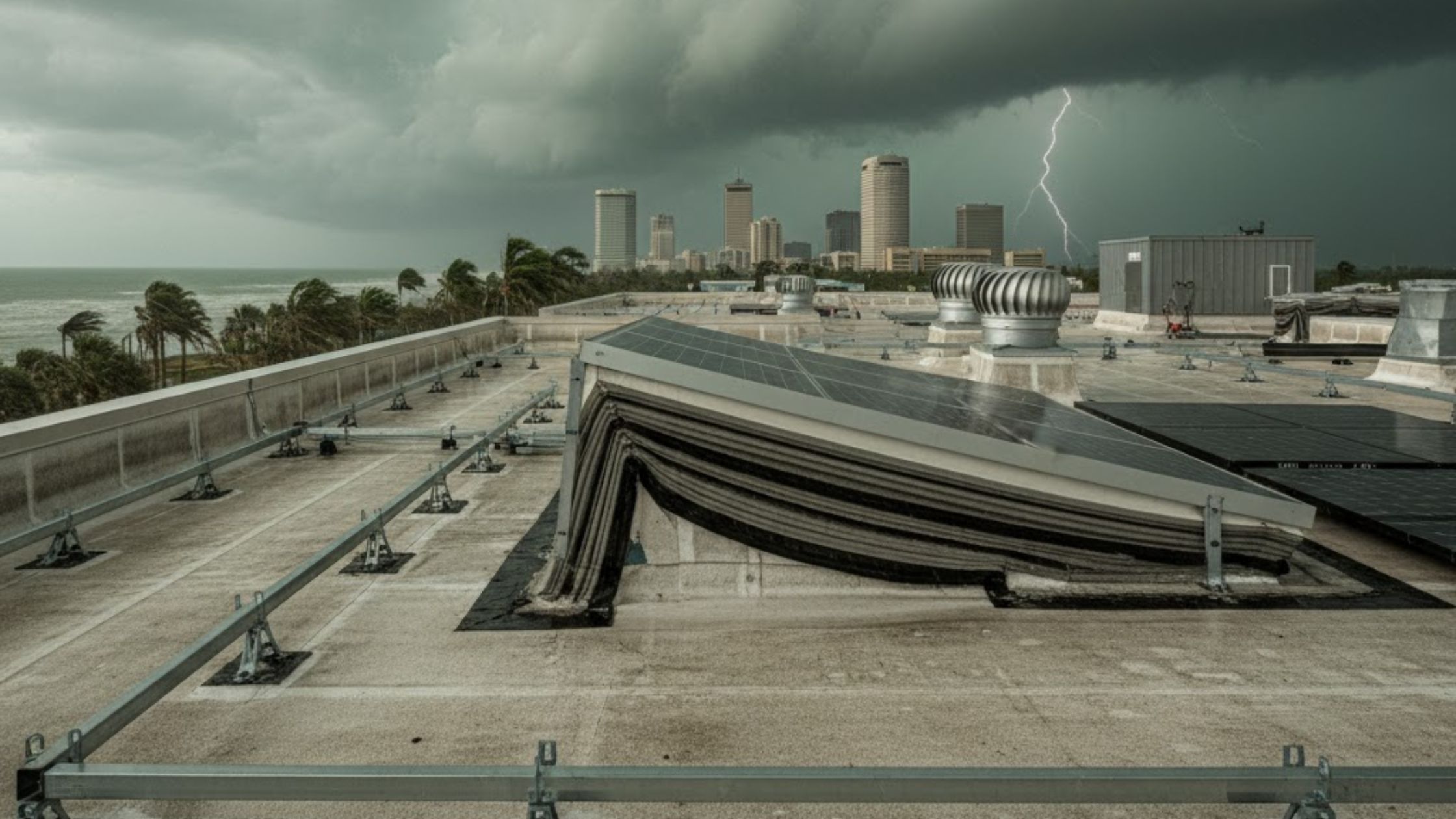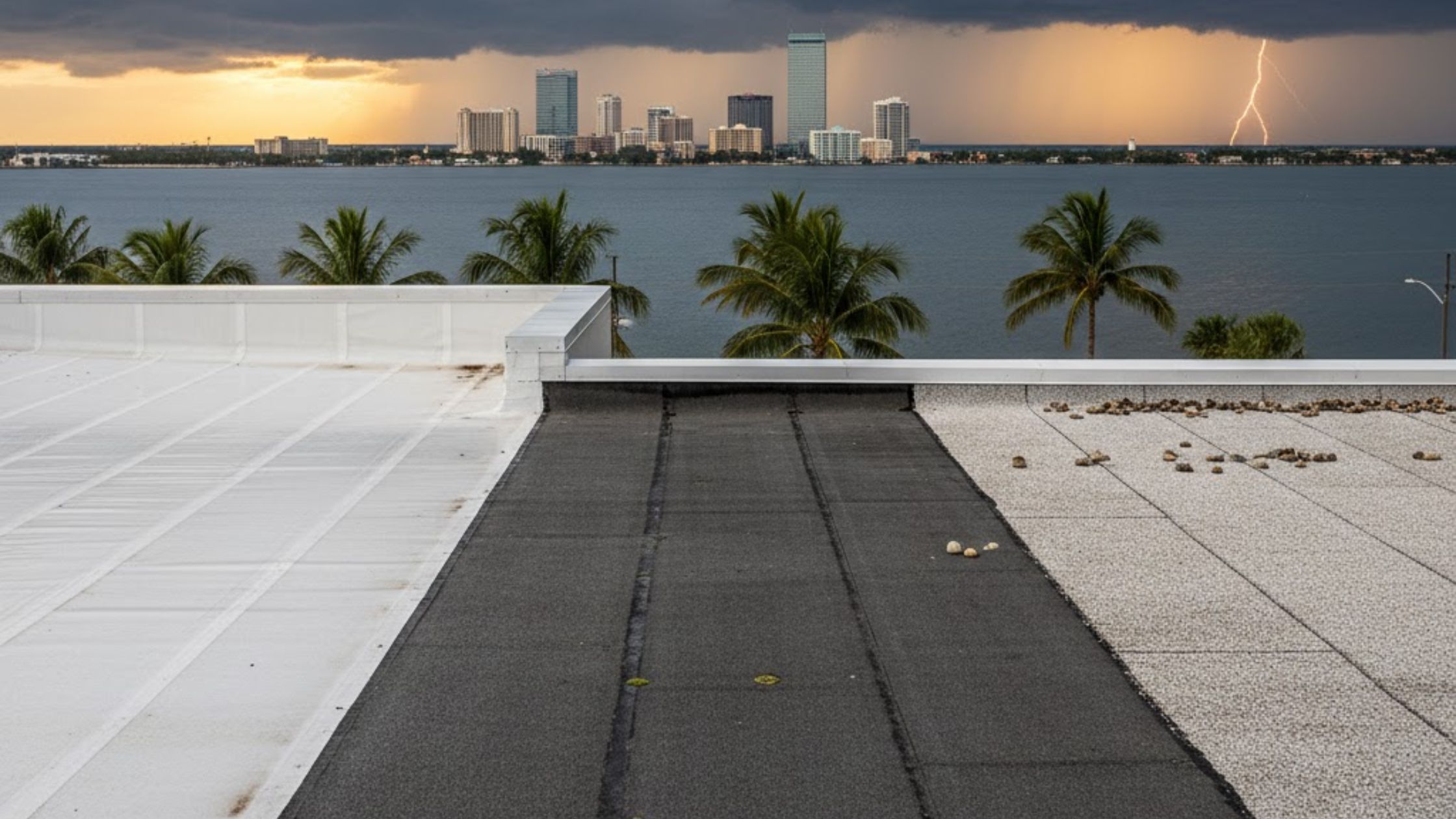What financing and tax incentive options exist for commercial roofing projects in Tampa?
Learn financing options & tax incentives for commercial roofing projects in Tampa. Discover PACE, CRA grants, energy credits & cost-saving programs.
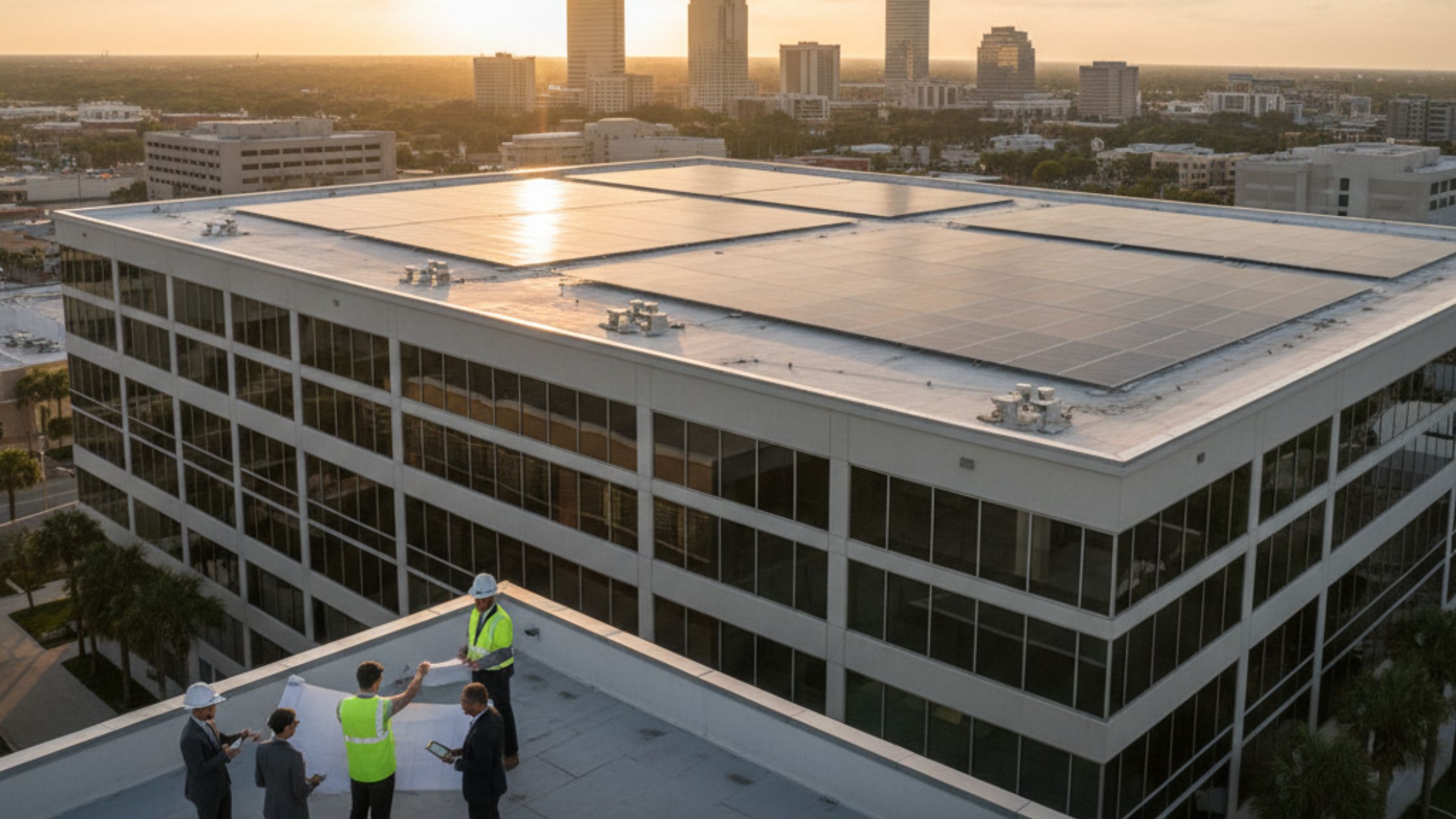
The sweltering heat and hurricane risks in Florida make a reliable commercial roof not just a necessity, but a crucial investment for any business owner. However, the significant upfront cost of a full roof replacement or major repair can be a major hurdle. Business owners often find themselves asking how they can afford essential work, especially when unexpected storm damage forces their hand. Thankfully, there are several powerful financial tools and tax advantages available to ease the burden of a new Commercial Roofing Tampa project, transforming a daunting expense into a manageable, value-adding capital improvement. Navigating the world of commercial financing and federal tax deductions can be complex, but understanding your options is the first step toward securing your business's future and operational efficiency. This comprehensive guide will break down the most popular financing pathways and key tax benefits specifically tailored for commercial properties, ensuring you can make a well-informed decision for your Tampa Bay business.
What Are the Most Common Commercial Roof Financing Options Available in Tampa?
Securing reliable commercial roof financing Tampa is paramount for protecting your physical assets and maintaining business continuity. Waiting for major roof repairs or replacement can lead to costly interior damage, higher energy bills, and even safety hazards, which is why having access to flexible funding is non-negotiable. Tampa area businesses have several robust financing options at their disposal, ranging from traditional bank products to specialized governmental and property-based funding models. Each option presents a unique set of terms, benefits, and qualifying criteria, and a careful comparison is necessary to find the perfect fit for your company’s financial structure.
Traditional Bank Loans
Traditional commercial bank loans are often the first avenue businesses explore for a large capital expenditure like a new roof. These loans are typically secured by the business's assets or the property itself, offering lower, fixed interest rates and predictable monthly payments over a set term. Banks offer a sense of security and familiarity, making them a cornerstone of commercial financing.
Hillsborough County businesses often prefer this route because the amortization schedule is straightforward, which helps with long-term budget forecasting. However, the approval process can be lengthy, requiring extensive documentation, a strong credit profile, and may include stricter collateral requirements than other alternatives. A good relationship with a local Tampa bank can often streamline this application process significantly.
Commercial Lines of Credit
A Commercial Line of Credit (CLOC) offers a flexible, revolving source of funds, much like a business credit card but with a higher limit and typically lower interest rate. This option is particularly useful for commercial property owners who anticipate covering both major expenses and smaller, recurring maintenance needs over time.
With a CLOC, you only pay interest on the money you actually use, not the entire approved limit. This flexibility makes it an excellent tool for handling unexpected emergency repairs, like damage after a major Florida storm, without having to apply for a new loan each time. While interest rates can fluctuate, the ease of access and quick turnaround make it a very attractive choice for an ongoing financing option for building upkeep.
Small Business Administration (SBA) Loans
The Small Business Administration (SBA) offers government-backed loans that can provide a significant financial lifeline for commercial roofing projects. The most common options are the SBA 7(a) and the 504 loan programs. The government guarantee reduces the risk for lenders, which often translates into lower down payments, longer repayment terms, and lower interest rates for the borrower.
SBA loans are particularly beneficial for small to mid-sized businesses that might not meet the strict underwriting criteria of a traditional bank loan. The repayment terms can extend up to 25 years for real estate improvements, making the monthly obligation far more manageable for a large-scale project such as a full commercial roof replacement. The qualification process involves both the SBA and a participating commercial lender, which is an important detail to keep in mind.
Commercial Real Estate Equity Loans
If your commercial property in the Tampa Bay area has substantial equity, a Commercial Real Estate Equity Loan or a cash-out refinance may be an ideal way to fund your roofing project. This method allows you to borrow against the accumulated value of your building, providing large borrowing amounts at potentially favorable rates.
Since the loan is secured by the property, the interest rates are generally lower than unsecured loans, and the repayment terms can be lengthy. This strategy essentially leverages an existing asset to fund a crucial upgrade, which in turn protects and enhances that asset's value. Businesses should carefully consider the total value of their property and the amount of equity they have available to borrow.
Leveraging C-PACE for Energy-Efficient Commercial Roof Upgrades
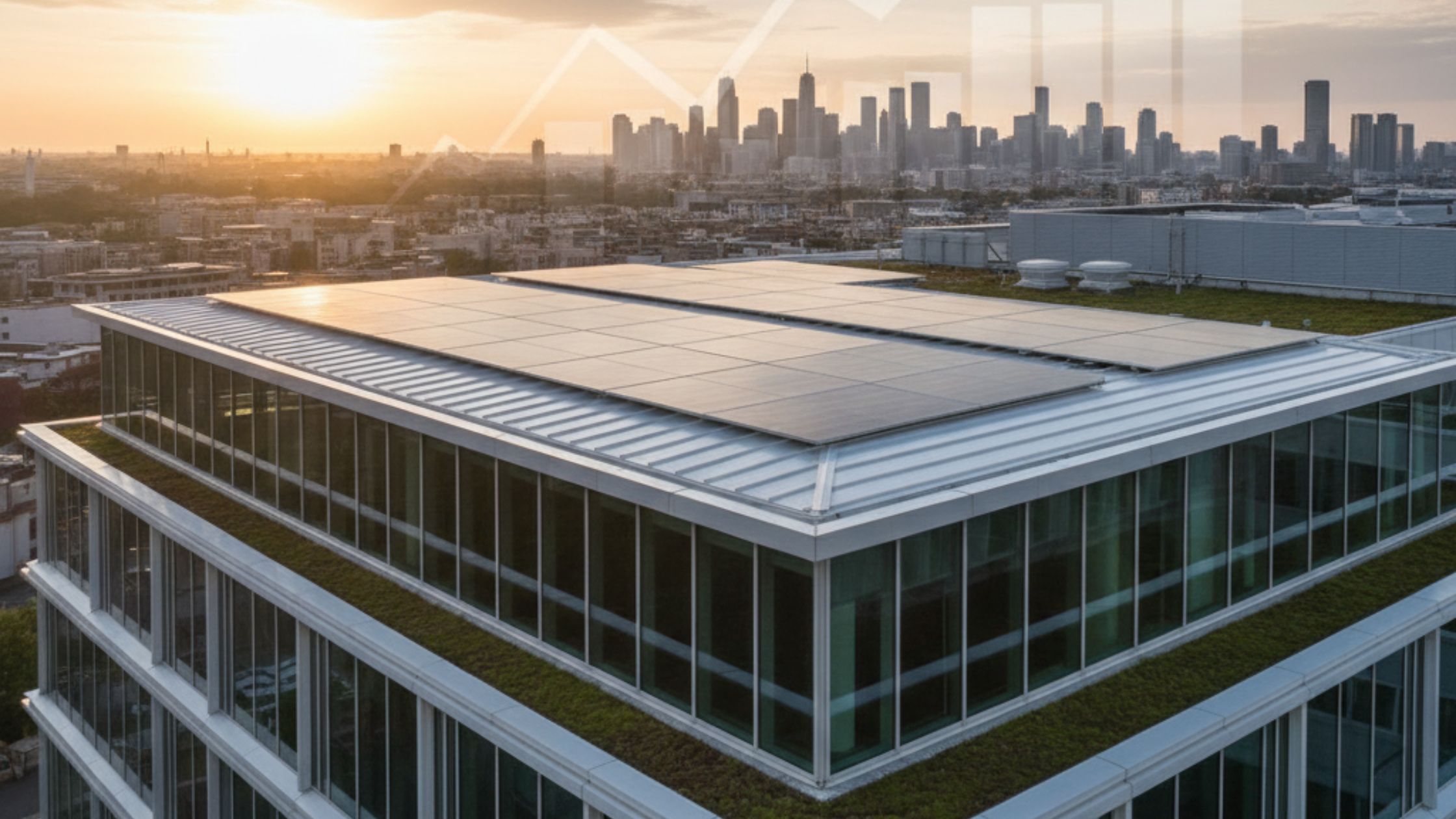
The Property Assessed Clean Energy (PACE) program, and specifically its commercial counterpart, C-PACE, is a unique and increasingly popular method of financing large-scale, energy-efficient and wind-resistance upgrades. C-PACE funding is a powerful tool for Tampa Bay area commercial property owners seeking to invest in high-performance roofing systems. This innovative program is rapidly becoming a preferred method for commercial roof financing Tampa because it differs significantly from traditional debt.
How Does the C-PACE Program Work?
C-PACE funding is structured not as a traditional loan, but as an assessment on the property itself, paid back over time through your property tax bill. This mechanism offers several distinct advantages over conventional financing. The assessment remains with the property upon sale, not the original owner, which removes a major disincentive for long-term investments in leased or soon-to-be-sold commercial properties.
This financing model provides up to 100% of the project's cost, including "soft costs" like permitting and engineering, and does not require a personal guarantee from the business owner. Because the assessment is tied to the property, approval is primarily based on the property’s value and the owner’s payment history of property taxes, rather than the business’s credit score or profitability. Repayment terms are also long, sometimes up to 20 years, aligning the investment with the expected lifespan of the new, energy-saving roof.
Commercial C-PACE Eligibility in Florida
In Florida, C-PACE is available in various counties and cities, often initially targeting commercial parcels. The funds can cover a wide range of improvements, from the installation of cool roofing materials and insulation to hurricane-hardening features. Qualifying a project requires meeting specific energy efficiency or hurricane-resistance criteria as defined by state and local regulations.
A new, reflective TPO or PVC roof that significantly reduces solar heat gain, for example, would almost certainly qualify as an energy-efficient upgrade under the C-PACE program. This is a game-changer for property owners who want to upgrade to a system that will provide long-term energy savings but lack the capital for the initial outlay. It's advisable to work with an approved C-PACE contractor and program administrator to ensure all documentation meets the strict requirements for this type of funding.
The Financial Benefits of C-PACE
Beyond the attractive financing structure, C-PACE projects often result in immediate and measurable financial benefits. By funding energy-efficient roofing upgrades, businesses see a reduction in utility consumption, which directly lowers operating expenses. These monthly savings can often offset or exceed the cost of the C-PACE assessment payment.
Furthermore, a well-insulated, energy-efficient roof can significantly improve indoor comfort and tenant satisfaction, leading to higher occupancy rates and increased property value. Utilizing C-PACE for a Tampa commercial roofing for energy savings project is a strategic move that enhances building performance, improves cash flow, and contributes to the long-term sustainability of the commercial asset. This creates a positive feedback loop of investment and return.
Key Federal Tax Incentives and Deductions for Commercial Roofing Projects
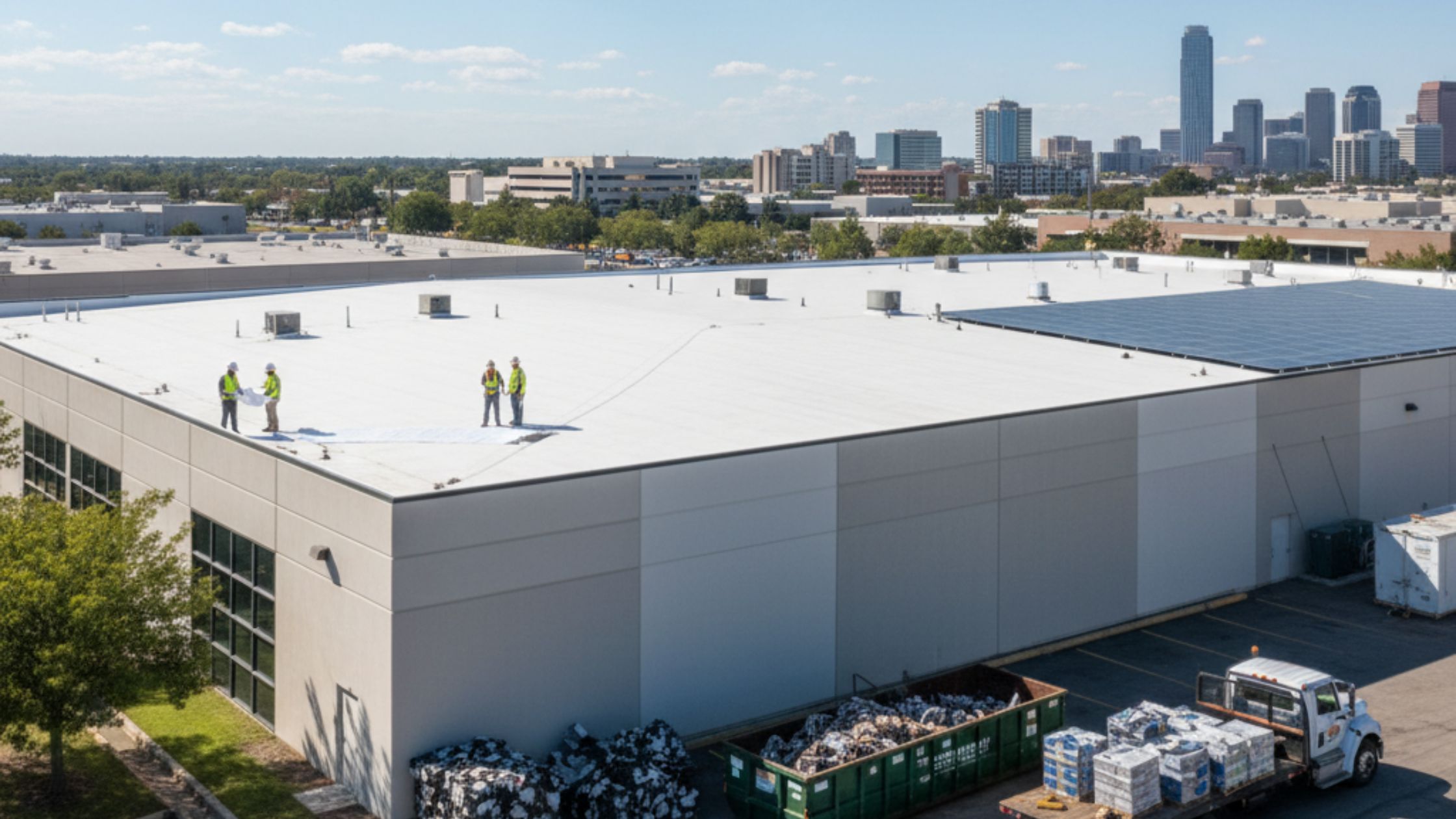
Beyond direct financing, the federal tax code offers compelling incentives that can dramatically reduce the net cost of a commercial roofing project. Understanding and correctly utilizing these tax provisions is an essential part of the financial planning for any major capital improvement. These incentives often focus on stimulating business investment and promoting energy efficiency in commercial properties across the nation, including the vibrant market of Tampa, Florida.
Section 179 Property Tax Deduction
The Section 179 deduction is one of the most powerful tax tools for commercial property owners. This provision of the IRS tax code allows businesses to deduct the full purchase price of qualifying equipment and software placed in service during the tax year, rather than capitalizing and depreciating the cost over many years. Crucially, the Tax Cuts and Jobs Act of 2017 expanded the definition of "qualified real property" to include roofs (along with HVAC, fire protection, and security systems).
This means a commercial roof replacement, considered an improvement to nonresidential real property, can now be fully expensed up to the annual limit in the year the project is completed, rather than being depreciated over the traditional 39-year period. This immediate write-off can result in substantial tax savings, greatly lowering the effective cost of the project and improving cash flow in the short term. The ability to deduct the full cost of a commercial roof replacement in the year of installation is a major financial advantage that shouldn't be overlooked.
Commercial Energy-Efficient Tax Deduction (Section 179D)
For businesses that specifically install energy-efficient roofing materials, the Energy-Efficient Commercial Buildings Deduction (Section 179D) offers another lucrative benefit. This deduction is designed to encourage the construction and renovation of energy-efficient commercial buildings. Eligible improvements include highly reflective "cool roofs" that are part of the building envelope's system.
To qualify, the new roof must be part of a larger system that reduces the building's total annual energy and power costs compared to a reference standard. The deduction amount can be significant, offering a per-square-foot write-off. This incentive works hand-in-hand with cool roofing technology, such as reflective coatings, TPO, or metal roofing, which are vital for mitigating the intense solar heat common in Florida. Businesses should consult with a qualified tax professional and a certified engineer to ensure their project meets all the stringent qualification requirements.
Bonus Depreciation Rules
In addition to Section 179, bonus depreciation may be applicable to your commercial roof improvement. This rule allows businesses to immediately deduct a large percentage of the cost of qualifying property in the year it is placed in service, complementing or supplementing the Section 179 deduction. While the rate of bonus depreciation is subject to change based on current tax law, it provides another avenue for accelerated cost recovery.
This incentive works best when the cost of the roofing project exceeds the Section 179 limit, allowing for immediate deduction of the remaining amount up to the bonus depreciation percentage. It is another way the federal government seeks to spur capital expenditure by making investments more immediately rewarding to business owners. The combination of Section 179 and bonus depreciation can dramatically alter the financial picture of a major commercial roofing endeavor.
Understanding Commercial Roofing Financial Entities and Partnerships
Successfully navigating the financial landscape for a commercial roofing project often requires partnering with various entities, from specialized lenders to certified contractors. These partnerships are critical for accessing funds, ensuring project compliance, and maximizing both your financing and your roofing tax credits Florida. The Tampa Bay business community has access to a robust network of these specialized financial and construction partners.
Roofing Company Financing Programs
Many established commercial roofing contractors in the Tampa area partner with financial institutions to offer direct financing programs to their clients. These programs are often tailored specifically for roofing projects and can include quick approval processes, promotional interest rates, or "same-as-cash" deferral periods.
Contractor-offered financing can simplify the process immensely, providing a one-stop-shop solution. It is especially useful for emergency repairs where time is of the essence and waiting on a traditional loan is not feasible. While convenient, business owners should always compare the terms and interest rates of contractor financing against those of traditional lenders to ensure they are securing the most competitive deal.
The Role of Financial and Tax Professionals
Given the complexities of commercial financing, tax law, and specialized programs like C-PACE and Section 179, engaging financial and tax professionals is not merely helpful—it’s essential. A knowledgeable financial expert can help structure the deal to best align with your business’s cash flow and long-term financial goals.
A Certified Public Accountant (CPA) specializing in commercial real estate can ensure that your project is properly documented to maximize federal tax benefits like Section 179 and Section 179D. These professionals are your guides through the intricate IRS regulations, helping to differentiate between a deductible repair and a capitalized improvement, which is a crucial distinction in tax reporting. Never underestimate the value of expert financial advice.
Insurance Proceeds and Roofing Projects
While not technically a financing option, leveraging your commercial property insurance is a significant financial component, particularly after storm damage. In Florida, where hurricanes are a recurring threat, a large portion of a roof replacement cost may be covered by an insurance claim.
Financing, in this context, often serves to bridge the gap between the total project cost and the insurance payout, or to cover the deductible. A reputable commercial roofing contractor should be adept at working with insurance adjusters to ensure a fair and comprehensive claim settlement, which is a significant factor in managing the overall project expense.
Strategic Considerations for Maximizing Your Roofing Investment
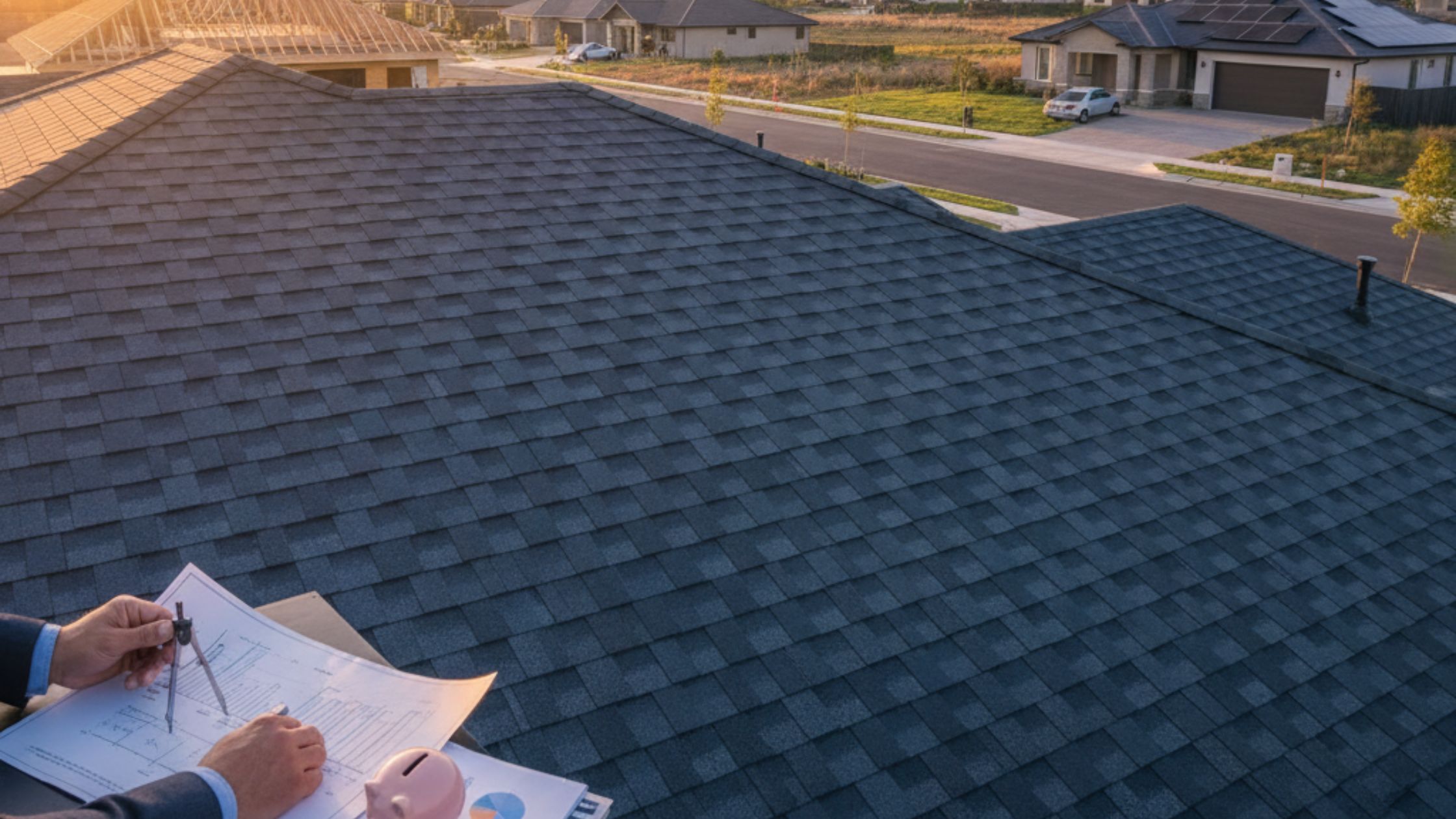
A new commercial roof is not just an expense; it’s a long-term capital investment that can yield significant returns through reduced operating costs, minimized business interruption, and enhanced property value. To truly maximize the return on your investment, a strategic approach that combines smart financing with energy-efficient material choices is paramount.
Choosing Materials for Maximum Savings
The choice of roofing material directly impacts both the initial project cost and your potential for energy-related savings and tax incentives. Highly reflective and sustainable materials like white TPO, PVC, and coated metal roofs drastically reduce the amount of heat absorbed by the building. This is particularly important for commercial properties in the Tampa climate.
Opting for materials that qualify for energy-efficiency incentives can help unlock federal tax deductions, effectively lowering the final price tag of the upgrade. Investing more upfront in a quality, energy-efficient system can result in lower utility bills and less wear and tear on your HVAC systems, leading to lower maintenance costs over the roof’s lifespan. Businesses looking for guidance on the best material choices should review the expertise available at the Commercial Roofing Tampa link for deeper insight.
The Importance of Comprehensive Planning
Effective cost and project management begins long before the first shingle is removed. A comprehensive plan should include a detailed assessment of the existing roof, a clear scope of work, and multiple quotes from reputable, licensed commercial roofing contractors. This ensures transparency and helps you budget accurately.
Financial planning should run parallel to the construction planning, clearly outlining how the project will be funded, whether through a bank loan, C-PACE, or a combination of methods. Mismanagement or unforeseen costs can quickly derail a project, making due diligence in the planning phase essential for success.
Frequently Asked Questions About Commercial Roofing Tampa Financing
To further assist you in making an informed decision about your commercial roof investment, we have compiled answers to some of the most common financial and logistical questions we encounter from Tampa Bay area business owners.
1. Can commercial roof repairs be deducted, or only replacements?
Generally, routine repairs to a commercial roof are considered ordinary and necessary business expenses and are fully deductible in the year they are incurred. However, a full replacement or significant restoration is usually classified as a capital improvement, which must be depreciated over a longer period.
The major exception is the Section 179 deduction, which allows for the immediate expensing of a full roof replacement on nonresidential property, effectively treating it like an immediate deduction. It is vital to consult with a tax professional to correctly classify the work and take advantage of all possible tax benefits.
2. Is there a Florida-specific tax credit for commercial roofing?
Florida itself does not currently offer a state-level, specific roofing tax credit for commercial properties. However, Tampa businesses can benefit from federal programs. The primary financial incentives for commercial properties are the federal tax deductions, specifically Section 179 and Section 179D, as well as the availability of the C-PACE financing program.
The focus in Florida is often on disaster mitigation and energy efficiency, and while there may not be a state credit, the federal deductions, combined with the energy savings from a high-performance roof, often provide a much greater financial return than any potential state credit. Furthermore, the insurance discounts for hurricane-resistant roofing also act as a significant, recurring financial incentive.
3. How long does the C-PACE approval and funding process take for a commercial roof?
The C-PACE process is often much faster than securing a traditional commercial bank loan. After an initial pre-qualification based on property equity and tax history, the process involves a technical review of the project’s energy-saving components and final property assessment approval.
While timelines can vary based on the specific C-PACE administrator and the complexity of the project, many property owners receive approval and can begin work in a matter of weeks. The fact that the funding is tied to the property and not solely the business's financials helps to accelerate the process, making it an excellent choice for time-sensitive commercial roofing Tampa projects.
4. What factors determine the interest rate on a commercial roof loan?
Several key factors influence the interest rate a lender offers for a commercial roof loan. These include the creditworthiness of the business and its principals, the amount of the loan, the repayment term chosen, and the type of collateral offered. Loans secured by commercial real estate equity typically have lower rates than unsecured options.
For specialized funding like an SBA loan, the interest rate may be capped or governed by SBA guidelines, often resulting in lower rates. The current national and local economic environment, including the Federal Reserve's prime rate, also plays a crucial role in determining commercial borrowing costs at any given time.
5. Can a business combine different types of financing and incentives for a single roofing project?
Absolutely. In fact, a strategic combination of financing and incentives is often the most financially savvy approach. A business might use a Traditional Bank Loan to cover the initial outlay, while simultaneously applying for C-PACE funding for the energy-efficient portion of the project.
Additionally, the entire project cost, regardless of the funding source (loan, cash, or C-PACE assessment), is generally eligible for the federal Section 179 or Section 179D tax deductions. Combining these tools allows for a lower out-of-pocket expense, a predictable repayment structure, and maximized tax savings, representing the ultimate financial strategy for a commercial roof investment.
Summary of Commercial Roofing Financial Strategies
Securing a durable, high-quality commercial roof in the Tampa area is non-negotiable for protecting your business operations and assets from the relentless Florida weather. The good news is that property owners have a deep toolbox of financial resources to make this critical investment achievable. Whether you opt for the familiar structure of a Traditional Bank Loan, the flexible, revolving power of a Commercial Line of Credit, or the government-backed security of an SBA Loan, a viable funding path exists for nearly every business size and credit profile. This versatility ensures that a financial constraint does not become a threat to your property's integrity.
Furthermore, forward-thinking programs like C-PACE offer a non-traditional, property-assessed funding model for energy-efficient and wind-resistant upgrades, providing up to 100% financing with long repayment terms tied to the property tax bill. This is an unparalleled advantage for investments that deliver long-term operational savings. Simultaneously, businesses can leverage significant federal incentives, most notably the Section 179 deduction, which allows for the immediate expensing of a full roof replacement, dramatically accelerating tax savings and improving annual cash flow. Understanding these options is the first critical step toward a successful commercial roofing project.
Navigating the complexities of financing, tax law, and specialized programs can be overwhelming, but you don't have to manage this process alone. Our team is equipped with the expertise to guide you through every financial decision, from initial cost estimation to securing the most advantageous funding. We are committed to helping Tampa businesses protect their properties while optimizing their financial resources. To explore your options, request a detailed estimate, and begin leveraging these powerful financial tools for your next commercial roofing project, please do not hesitate to contact us directly. Trust CB Roofing Solutions to provide not just a superior roof, but a smarter financial strategy for your commercial property investment.

